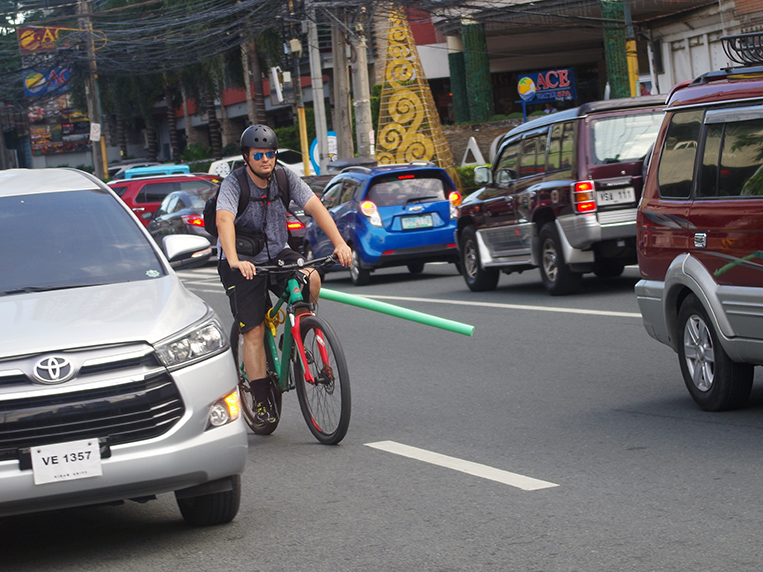
Last month, lawmaker and longtime cyclist Antonio Tinio filed House Bill 8446, also known as the “Minimum Overtaking Distance” bill. With it, he is seeking to mandate that motor vehicles must maintain a minimum distance of 1.5m when overtaking bicycle users on the road. He says the bill is necessary in order to protect cyclists who very often have to use public roads due to the lack of bicycle lanes in the country. The bill also calls for a nationwide information campaign on the topic and proposes fines ranging from P5,000 up to P20,000—plus a possible license revocation—for violators.
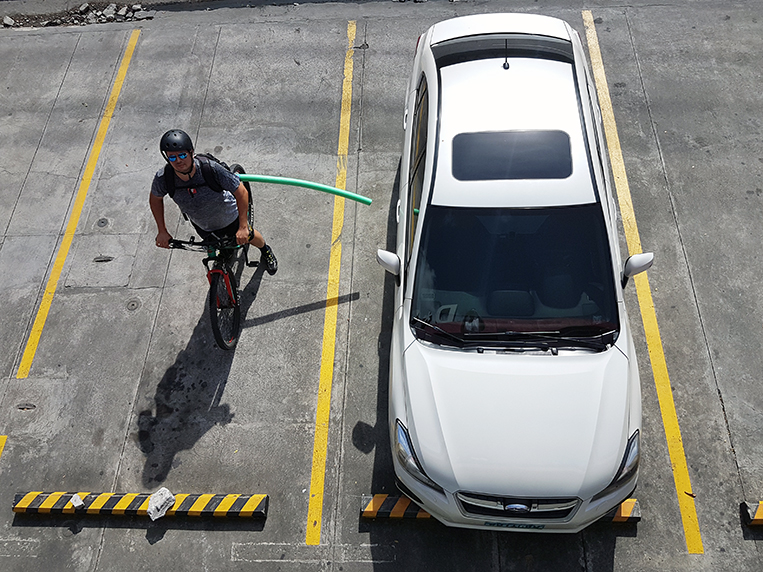
Having to keep a certain distance when overtaking vulnerable road users is already required by law in many other countries. Most states in the US have the so-called Safe Passing Law, stipulating distances from 2ft (0.6m) to 4ft (1.2m). Rule 163 of the UK Highway Code mandates that drivers must “give motorcyclists, cyclists and horse riders at least as much room as you would when overtaking a car,” and German courts have decided that the safe distance for cars when overtaking cyclists is 1.5m. But would such a rule actually work on the congested roads of Metro Manila? We conducted an experiment to find out.
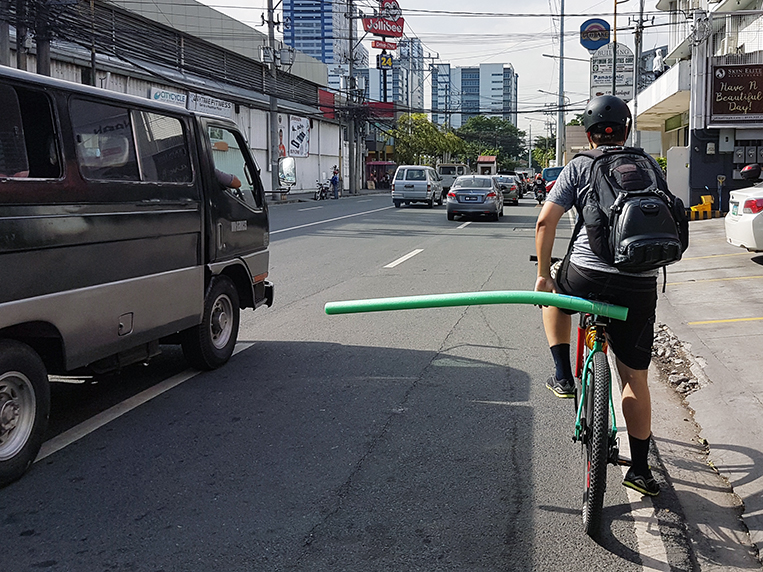
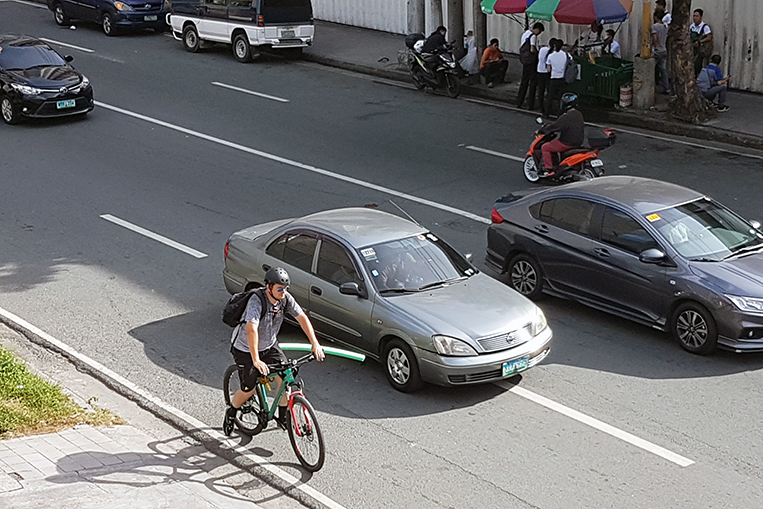
Inspired by cyclists in other countries—including one commuter in Canada who got a lot of media coverage—we attached a pool noodle to the back of our bicycle and went for a ride around our neighborhood. Pool noodles are made of soft and light material, meaning they won’t damage a vehicle in case of contact, but will still create a visible barrier for cars following behind. It’s a simple way to almost force vehicles into giving cyclists more room on the road, but how would such an idea be welcomed by Metro Manila motorists?
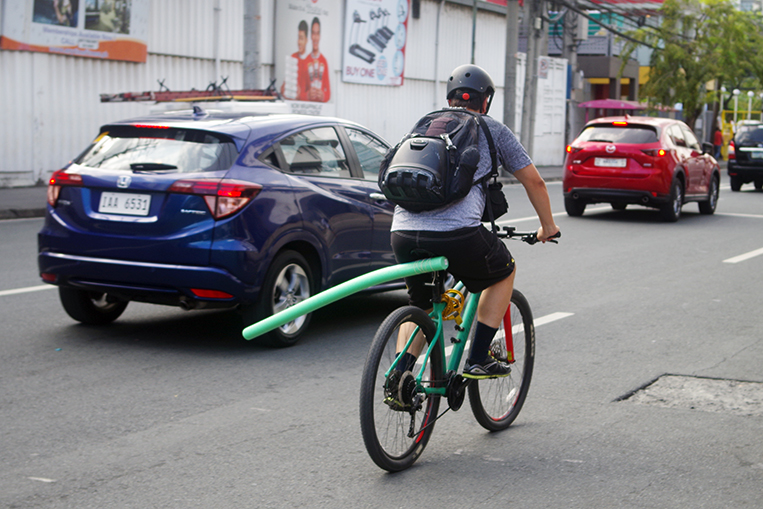
Our initial expectations were largely negative, and we somehow expected everything from being blasted by horns to being called names. But surprisingly, quite the opposite turned out to be the case. The idea worked, and while we did earn some puzzled looks from both pedestrians and drivers, cars and other vehicles generally seemed to get the idea and gave us a lot more space than usual when driving past us. The only exceptions were a couple of jeepneys that—in true “King of the Road” fashion—simply didn’t care and even bent our noodle with their steel bumpers while muscling ahead.
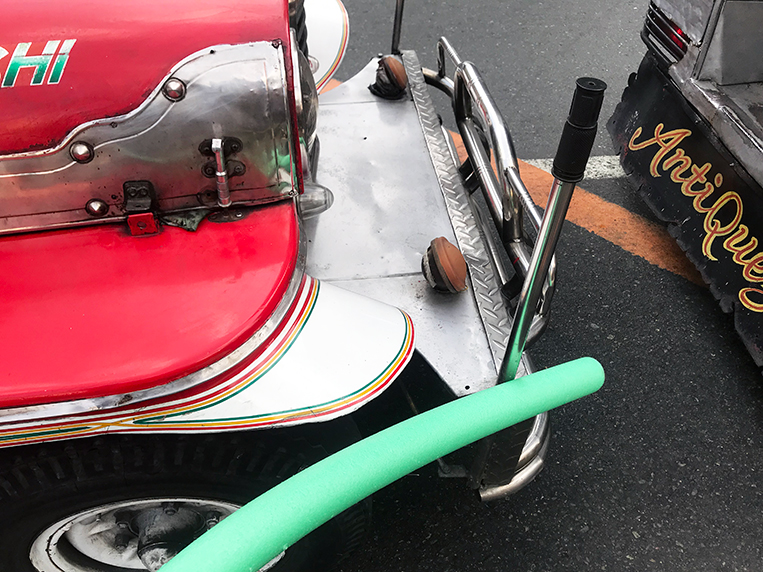
From a rider’s perspective, it was a different experience from cycling without a foam stick attached to the bike. On the one hand, the space that was suddenly afforded to us was nice, but it also slowed down our progress as squeezing past traffic with a 1.3m noodle was a bit more complicated and at times reduced us to the speed of the cars around us. With a little more work and a better setup that allows for the contraption to be folded, this challenge could easily be overcome, meaning that having such a space-maker permanently attached to a bicycle is definitely possible.
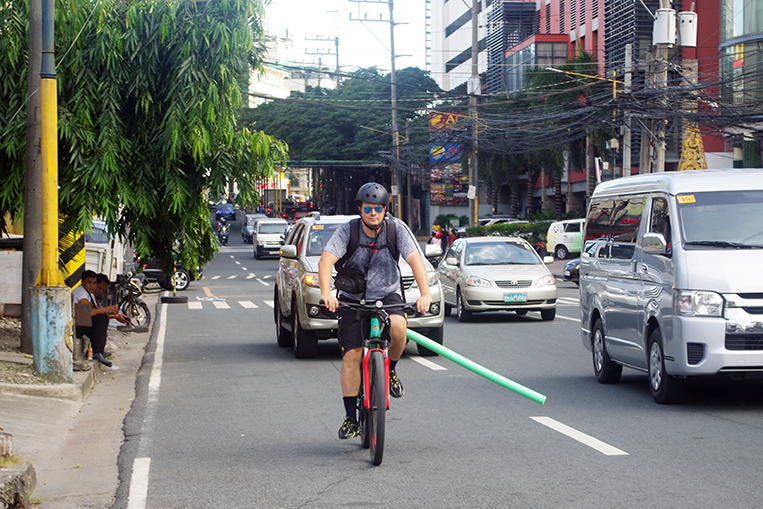
What the experiment also proved is that House Bill 8446 could work, even on the busy roads of the nation’s capital. Drivers can pass cyclists at a safe distance, but currently very often choose not to even if it means they might risk a collision. Riding at the side of the road—where potholes, debris and uneven road surfaces are waiting—also means cyclists often have to swerve unexpectedly to avoid obstacles. If other road users are not giving us the room we need to safely maneuver, then accidents are likelier to happen. More bike lanes and an overtaking distance mandated by law would help make things safer for the growing number of pedalers on our roads. But until these things materialize, getting your noodle out in public seems to be a good alternative.

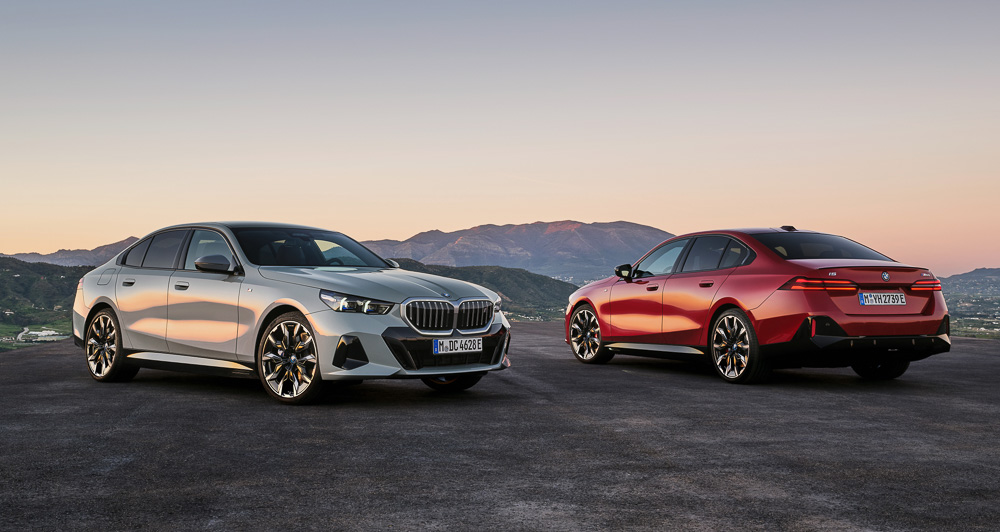
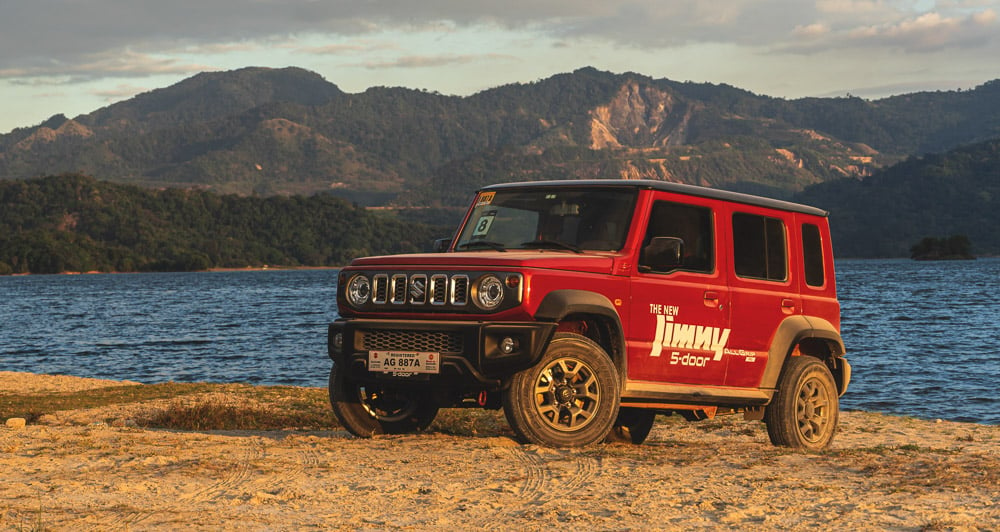

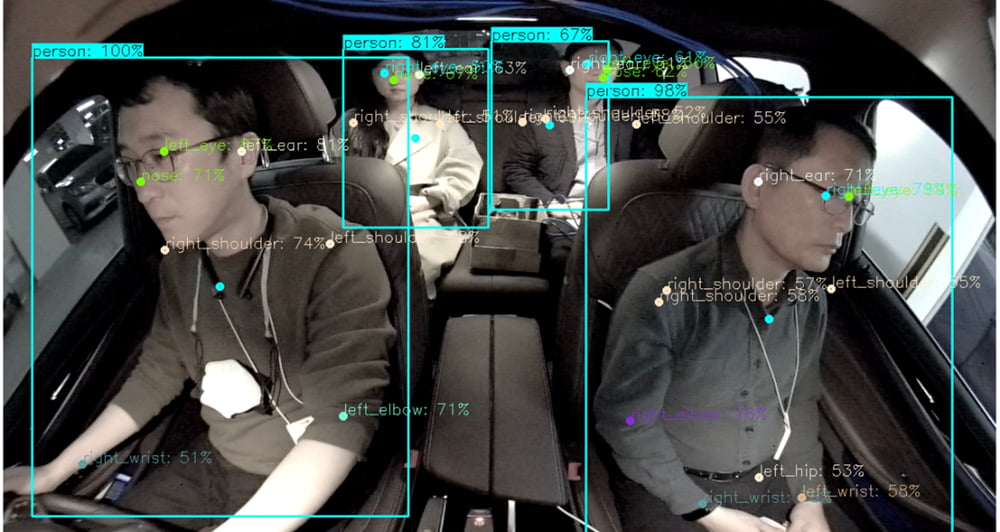

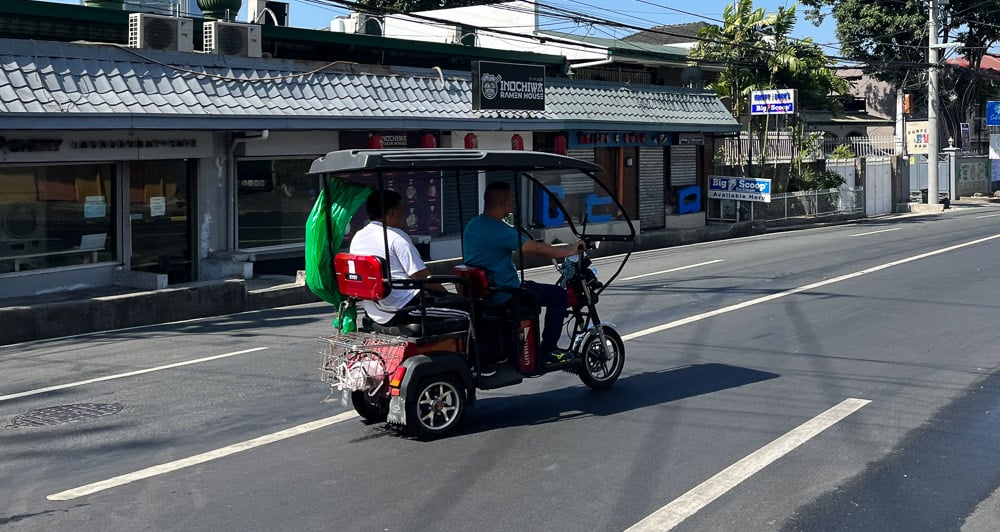

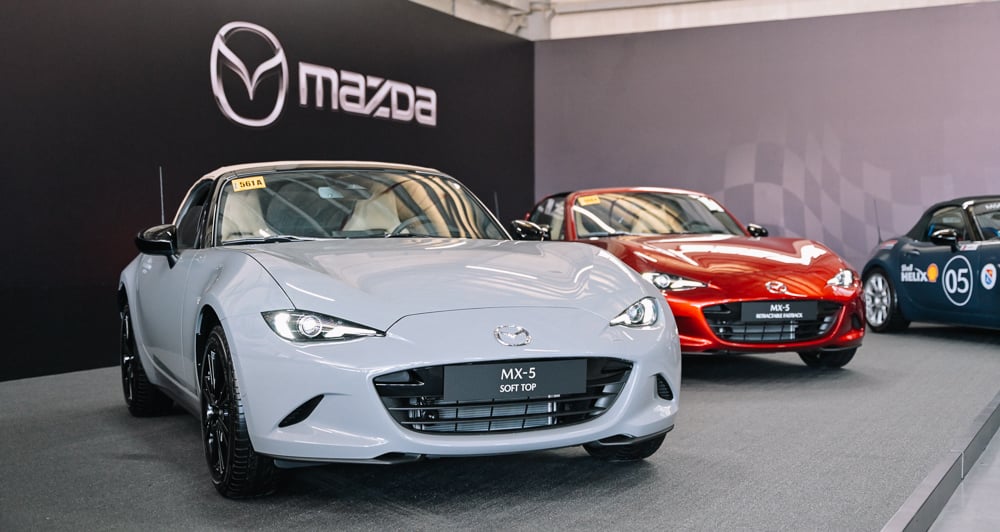
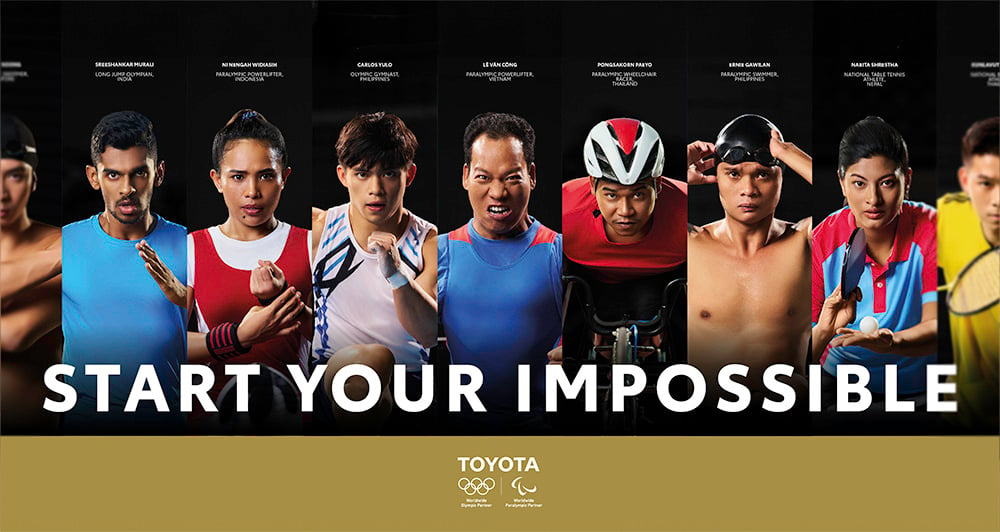
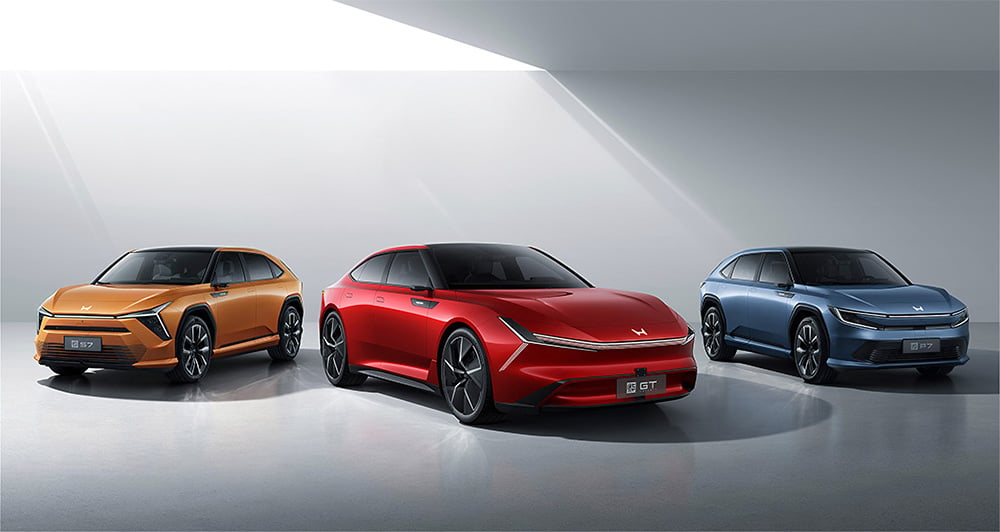
Comments